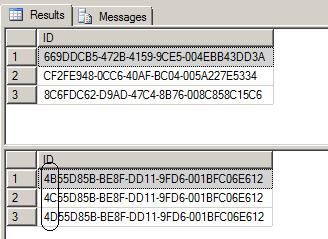Return Auto Generated Key In Sql

- Return Auto Generated Key In Sql Tutorial
- Return Auto Generated Key In Sql File
- Return Auto Generated Key In Sql 2017

Similar to MySQL, PostgreSQL, Oracle, and many other relational databases, SQL Server is best utilized when assigning unique primary keys to most database tables.
The advantages to using numeric, auto incremented primary keys are numerous, but the most impactful benefits are faster speed when performing queries and data-independence when searching through thousands of records which might contain frequently altered data elsewhere in the table. With a consistent and unique numeric identifier, applications can take advantage of these faster and more reliable queries.
May 28, 2017 In this video you will learn How to get primary key value (auto-generated keys) from inserted queries in JDBC using a demo project.
- AUTO INCREMENT Field. Auto-increment allows a unique number to be generated automatically when a new record is inserted into a table. Often this is the primary key field that we would like to be created automatically every time a new record is inserted.
- I am designing a table and I have decided to create an auto-generated primary key value as opposed to creating my own scheme or using natural keys. I see that SQL Server offers globally unique identifiers (GUIDs) as well as identities to create these valu.
- I'm trying to get a the key-value back after an INSERT-statement. Example: I've got a table with the attributes name and id. Id is a generated value. INSERT INTO table (name) VALUES('bob'); Now I want to get the id back in the same step.
Basic Table Creation
Once connected to your SQL Server, you’d normally start by CREATING a new table that contains the the field you wish to use as your incremented primary key. For our example, we’ll stick with the tried and true id field:
The problem here is, we have no way of controlling our id field. When a new record is inserted, we not only must manually enter a value for id, but we have to perform a query ahead of time to attempt to verify that id value doesn’t already exist (a near-impossibility when dealing with many simultaneous connections).
Using Identity and Primary Key Constraints
Return Auto Generated Key In Sql Tutorial
The solution turns out to be using two constraint options provided by SQL Server.
The first is PRIMARY KEY, which as the name suggests, forces the specified column to behave as a completely unique index for the table, allowing for rapid searching and queries.
While SQL Server only allows one PRIMARY KEY constraint assigned to a single table, that PRIMARY KEY can be defined for more than one column. In a multi-column scenario, individual columns can contain duplicate, non-unique values, but the PRIMARY KEY constraint ensures that every combination of constrained values will in fact be unique relative to every other combination.
The second piece of the puzzle is the IDENTITY constraint, which informs SQL Server to auto increment the numeric value within the specified column anytime a new record is INSERTED. While IDENTITYcan accept two arguments of the numeric seed where the values will begin from as well as the increment, these values are typically not specified with the IDENTITY constraint and instead are left as defaults (both default to 1).
Return Auto Generated Key In Sql File
With this new knowledge at our fingertips, we can rewrite our previous CREATE TABLE statement by adding our two new constraints.
That’s all there is to it. Now the id column of our books table will be automatically incremented upon every INSERT and the id field is guaranteed to be a unique value as well.
Return Auto Generated Key In Sql 2017
6.4 Retrieving AUTO_INCREMENT Column Values through JDBC
Before version 3.0 of the JDBC API, there was no standard way of retrieving key values from databases that supported auto increment or identity columns. With older JDBC drivers for MySQL, you could always use a MySQL-specific method on the Statement interface, or issue the query SELECT LAST_INSERT_ID() after issuing an INSERT to a table that had an AUTO_INCREMENT key. Using the MySQL-specific method call isn't portable, and issuing a SELECT to get the AUTO_INCREMENT key's value requires another round-trip to the database, which isn't as efficient as possible. The following code snippets demonstrate the three different ways to retrieve AUTO_INCREMENT values. First, we demonstrate the use of the new JDBC 3.0 method getGeneratedKeys() which is now the preferred method to use if you need to retrieve AUTO_INCREMENT keys and have access to JDBC 3.0. The second example shows how you can retrieve the same value using a standard SELECT LAST_INSERT_ID() query. The final example shows how updatable result sets can retrieve the AUTO_INCREMENT value when using the insertRow() method.
Example 6.8 Connector/J: Retrieving AUTO_INCREMENT column values using Statement.getGeneratedKeys()
Example 6.9 Connector/J: Retrieving AUTO_INCREMENT column values using SELECT LAST_INSERT_ID()
Example 6.10 Connector/J: Retrieving AUTO_INCREMENT column values in Updatable ResultSets
Running the preceding example code should produce the following output:
At times, it can be tricky to use the SELECT LAST_INSERT_ID() query, as that function's value is scoped to a connection. So, if some other query happens on the same connection, the value is overwritten. On the other hand, the getGeneratedKeys() method is scoped by the Statement instance, so it can be used even if other queries happen on the same connection, but not on the same Statement instance.